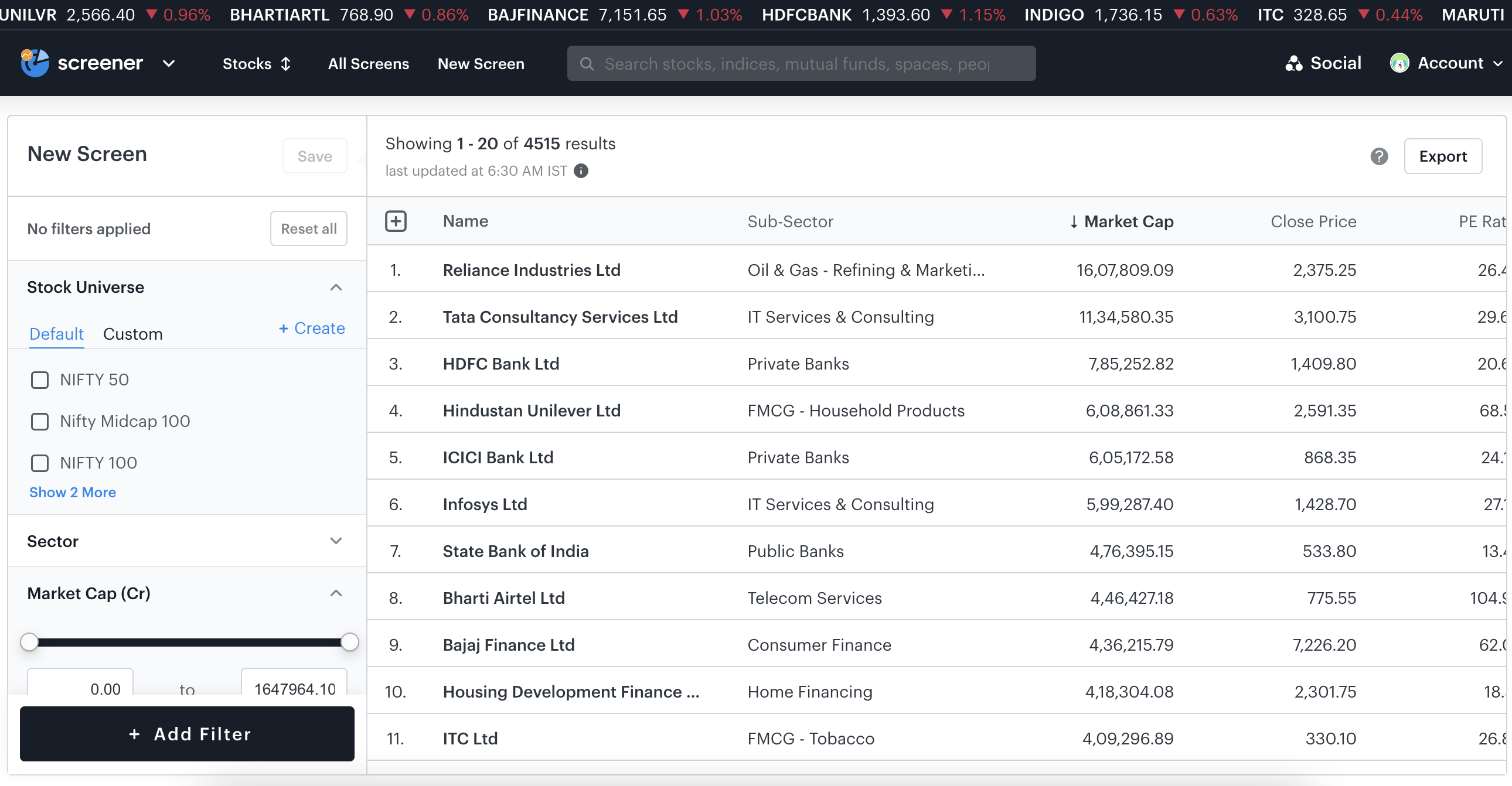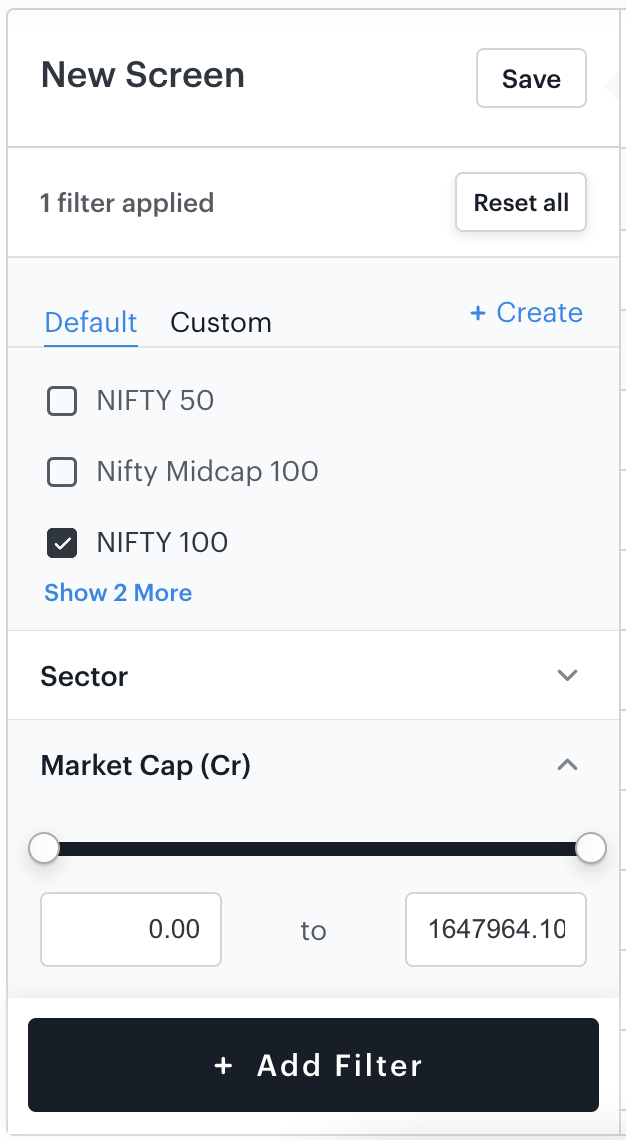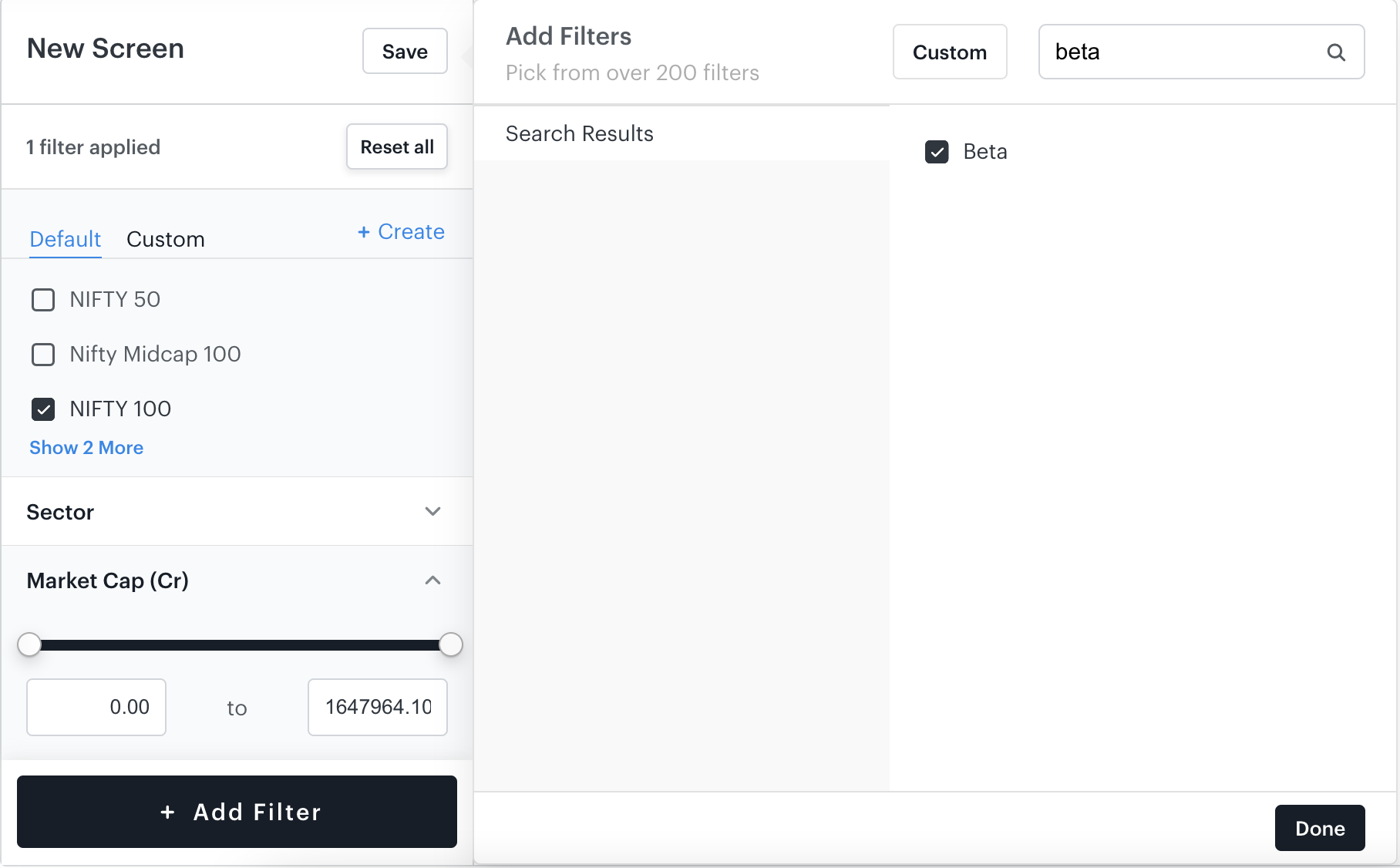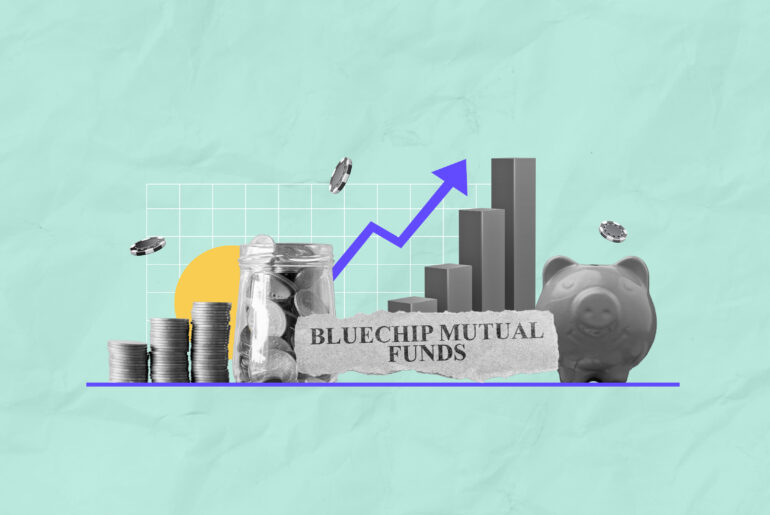Last Updated on Oct 20, 2022 by Aradhana Gotur
You may have seen investors glorifying ‘high beta stocks’. These are known to be volatile and riskier compared to the overall market. In terms of risk, these have the potential to give relatively higher returns in line with the risk. Since beta is a measure of volatility and an indicator of stock performance, it can be used to diversify your investment portfolio.
In this article, we discuss how to use beta in portfolio diversification and optimise your returns.
Before understanding how to use beta for portfolio diversification, let’s look at how it is connected to risk and what problem it solves.
Table of Contents
Types of risks
- Unsystematic risk
Unsystematic risk is unique to a stock or an industry and can be diversified. For instance, tech stocks in your portfolio would be impacted if the IT sector is undergoing a crisis. You can diversify this risk by reducing or exiting your IT stock holdings and investing in other better-performing sectors.
- Systematic risk
This risk is caused by macro factors and affects almost all stocks. For instance, if a recession hits, it impacts the overall economy, and virtually no stocks are spared. Therefore, systematic risk cannot be diversified. Systematic risk is measured by beta.
Unlike unsystematic risk, the systematic risk can’t be diversified. Meaning, investors can’t do much to minimise it. So, they expect compensation for the resultant losses.
What is beta, and how does it work?
Beta is the measure of the volatility of a stock compared to the overall market. It measures the systematic risk of an investment.
How to interpret beta?
The benchmark index is assigned a beta of 1. So if the beta of a particular stock is high, it is said to be more volatile, meaning its price moves too frequently. That is why it is said to be riskier. In contrast, if the beta of a stock is lower than 1, it is more stable and less risky. Let’s look at this in detail.
If Nifty 50 is the benchmark index with a beta of 1, here’s how you can interpret a stock beta:
- Beta of less than 1: the stock is less volatile and less reactive to index movement. For example, if Nifty moves down by 2%, the stock price falls at a higher rate.
- Beta equal to 1: this means the stock is as volatile as Nifty50. If the index increases, the stock is also likely to go up at a similar pace, and vice versa.
- Beta of more than 1: in this case, the stock is more volatile compared to the index. The pace of price movement is greater than that of the index. For example, if Nifty moves up by 2%, the stock price increases at a higher rate.
Did you know that beta can also be negative?
the stock is inversely correlated to the market and tends to move in the opposite direction. The higher the negative beta, the higher the volatility in the stock price movement. For example, if Nifty moves up by 2%, the stock price falls by 1%.
Beta indicates volatility, not direction of price movement
In addition to measuring systematic risk, beta also indicates the performance of the stock. But let’s not mistake performance for returns. What it means is that more volatile stocks are relatively riskier. And going by the risk-reward relationship, this stock can potentially give higher returns. But high risk never guarantees high returns.
That said, beta can indicate the volatility and riskiness of a stock but not the direction of the price momentum or the relative strength of the company.
For instance, a high beta stock is when a high beta stock rallies at a pace greater than the market, one reason could be that the company is overvalued. Eventually, the rally will slow down and the stock may correct, resulting in losses for investors.
Another example is a high beta stock that is tumbling. One of the possibilities can be that the stock is losing its value due to a current event that can adversely impact the company in the long term.
Importance of beta in portfolio management
Portfolio beta is the weighted beta of all the stocks in a portfolio. Different stocks in a portfolio can have different betas. A portfolio manager adds or removes several stocks based on their beta values to achieve the target portfolio beta. You are the manager of your investment portfolio. So when building your portfolio, you can follow a similar strategy.
First, come up with a target beta for your investment portfolio based on your risk tolerance. And then add or remove stocks of varied beta values to match the target.
How to use beta for portfolio diversification?
Most investors mistake diversification for an exercise about spreading their funds or investments across asset classes. What they don’t realise is diversification also means investing across assets within those classes. And this is where beta comes into the picture.
Let’s look at an example. Suppose you spread your investments across two to three large-cap stocks of varied beta values. You can rest assured that you have diversified your portfolio well.
In beta, the index is assumed to be an independent variable, and the stock price is a dependent variable. Therefore, the stock price moves in accordance with the index, not the other way around. Stock beta is also a multiplicative factor. A beta of 1.3 means a stock is 30% more volatile than the market.
Building an investment portfolio using beta
A smart beta strategy can help minimise the risk impact of high beta stocks.
A stock with a beta greater than 1 is considered aggressive, and a stock with a beta less than 1 is a defensive stock. So when you are looking to build your stock portfolio, you can classify assets based on aggressive and defensive nature. And then add or remove stocks based on the beta of the portfolio.
If you are looking for growth, consider stocks having a beta of more than 1. That way, you can enjoy a greater chance of earning a higher return because you are taking a higher risk of the stock tumbling if the market goes down. To hedge this volatility, you can add stocks having a beta closer to or equal to 1, as they are relatively stable.
If you are a conservative investor with an even lower risk appetite, you can also add stock having a beta value lower than 1. Low beta stocks are less-volatile and can help stabilise a portfolio of stocks by compensating for some losses of high beta stocks when they give lesser-than-expected returns. Of course, all this while being mindful of your risk tolerance.
How to find high beta stocks?
Finding high beta stocks using Tickertape is easy. Follow these steps:
Launch Tickertape’s Stock Screener

Go to Stock Screener.
Add your desired parameters

First, select your desired stock universe, which can be Nifty 50, Nifty 100, or others. Doing this will give you stock results only of that particular universe. For instance, if you select Nifty 50, you will get all the constituent stocks of the index along with their values.
In addition to this, you also add other metrics as per your preference.
Add beta filter

Click on “Add Filter” to open the filter panel. Here, search for ‘Beta’ and check the box. Click on ‘Done’. Beta is now applied to your results.
Get the list of high beta stocks
The screener shows stocks based on the metrics you chose, along with the beta values. Sort the beta column from high to low to get the high beta stocks. Sort it from low to high to get a list of low beta stocks.
List of high beta stocks
| Name | Market Cap (Rs. in cr.) | Close Price (Rs.) | Beta |
| Indusind Bank Ltd | 92,178.01 | 1,189.05 | 2.32 |
| Adani Total Gas Ltd | 3,52,252.67 | 3,202.85 | 2.22 |
| Bandhan Bank Ltd | 43,065.22 | 267.35 | 2.04 |
| Adani Transmission Ltd | 3,55,613.48 | 3,187.95 | 2.03 |
| Bajaj Finserv Ltd | 2,69,902.33 | 1,694.65 | 1.91 |
| Bajaj Finance Ltd | 4,36,215.78 | 7,226.2 | 1.90 |
| Samvardhana Motherson International Ltd | 49,840.57 | 73.55 | 1.73 |
| Tata Motors Ltd | 1,41,496.05 | 396.55 | 1.72 |
| Hindalco Industries Ltd | 89,670.72 | 400.2 | 1.71 |
| Adani Enterprises Ltd | 3,67,496.46 | 3,223.65 | 1.66 |
The above data is dated 13th October 2022 based on the following parameters:
- Stock universe is Nifty 100
- Beta is sorted from high to low
What are the shortcomings of beta?
- Analysis may go wrong in case you are unaware of the benchmark and the timeline that is used in measuring the beta.
- Beta doesn’t consider recent news and events that can impact a stock.
- Beta is calculated based on historical price movements of the stock so it may not predict the future accurately.
Although beta doesn’t indicate the direction of the price movement, it gives a general sense of how a stock can perform versus the overall market. If you have a low risk tolerance, you can consider stocks with a beta of 1 or lower, and if you have a high risk tolerance, you can go for stocks with a beta above 1. Know that the returns generated are mostly in line with the risk.
You can diversify your investment portfolio by investing in a combination of both beta variant stocks. However, like any other metric, beta also has limitations. So it is wise to base your decisions not just on beta but also consider other metrics when assessing a stock to add to your portfolio.
FAQs
What is beta in the stock market?
Beta is a statistical measure of a stock’s volatility in comparison to the overall market or an index. It also indicates the riskiness of the stock based on how volatile it is.
What are high beta stocks?
Stocks with a beta value of more than 1 are known as high beta stocks. These are considered highly volatile and relatively riskier.
How to find high beta stocks on NSE?
-Launch Tickertape’s Stock Screener
-Select the stock universe if you wish. Doing this will give you results only of that particular universe. For instance, if you select Nifty50, you will get all the constituent stocks of the index along with their values
-Select the market capitalisation if you have any preference
-Add ‘Beta’ from the filter panel
-Sort the beta column from high to low
-Your list of high beta stocks on NSE is ready
- Best Performing Index Funds in India (2025) - Jun 5, 2025
- Issue of Shares – Meaning, Types, Examples and Steps - Jun 4, 2025
- Banking Mergers in India – List of Merged PSU Banks, Advantages, and Challenges - Jun 3, 2025





